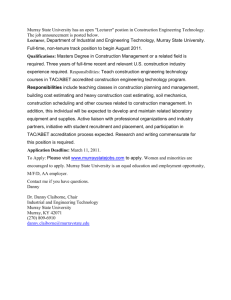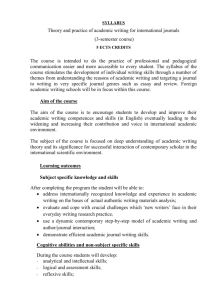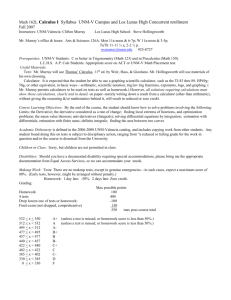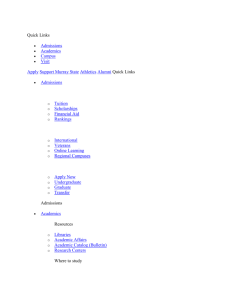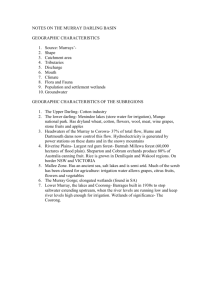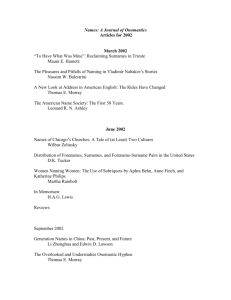Murray River resnagging experiment fact sheet (accessible version)
advertisement
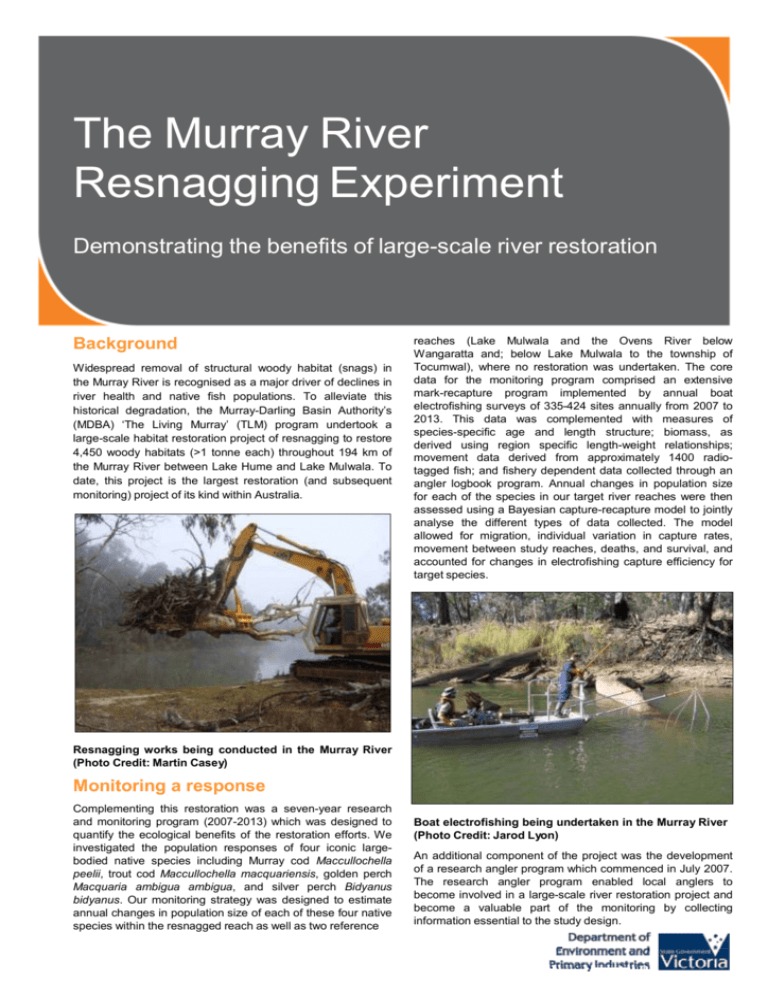
The Murray River Resnagging Experiment Demonstrating the benefits of large-scale river restoration Background Widespread removal of structural woody habitat (snags) in the Murray River is recognised as a major driver of declines in river health and native fish populations. To alleviate this historical degradation, the Murray-Darling Basin Authority’s (MDBA) ‘The Living Murray’ (TLM) program undertook a large-scale habitat restoration project of resnagging to restore 4,450 woody habitats (>1 tonne each) throughout 194 km of the Murray River between Lake Hume and Lake Mulwala. To date, this project is the largest restoration (and subsequent monitoring) project of its kind within Australia. reaches (Lake Mulwala and the Ovens River below Wangaratta and; below Lake Mulwala to the township of Tocumwal), where no restoration was undertaken. The core data for the monitoring program comprised an extensive mark-recapture program implemented by annual boat electrofishing surveys of 335-424 sites annually from 2007 to 2013. This data was complemented with measures of species-specific age and length structure; biomass, as derived using region specific length-weight relationships; movement data derived from approximately 1400 radiotagged fish; and fishery dependent data collected through an angler logbook program. Annual changes in population size for each of the species in our target river reaches were then assessed using a Bayesian capture-recapture model to jointly analyse the different types of data collected. The model allowed for migration, individual variation in capture rates, movement between study reaches, deaths, and survival, and accounted for changes in electrofishing capture efficiency for target species. Resnagging works being conducted in the Murray River (Photo Credit: Martin Casey) Monitoring a response Complementing this restoration was a seven-year research and monitoring program (2007-2013) which was designed to quantify the ecological benefits of the restoration efforts. We investigated the population responses of four iconic largebodied native species including Murray cod Maccullochella peelii, trout cod Maccullochella macquariensis, golden perch Macquaria ambigua ambigua, and silver perch Bidyanus bidyanus. Our monitoring strategy was designed to estimate annual changes in population size of each of these four native species within the resnagged reach as well as two reference Boat electrofishing being undertaken in the Murray River (Photo Credit: Jarod Lyon) An additional component of the project was the development of a research angler program which commenced in July 2007. The research angler program enabled local anglers to become involved in a large-scale river restoration project and become a valuable part of the monitoring by collecting information essential to the study design. The Murray River Resnagging Experiment Has it worked? Large-scale resnagging was followed by a three-fold increase in the Murray cod population, in effect increasing the “carrying capacity” in the resnagged reach rather than redistributing fish already present. Increases in the Murray cod population were largely driven by increased migration (i.e. more fish entering the resnagged reach than leaving) and a greater survival of juvenile fish compared to the reference reaches. A total of 55 anglers were involved in the research angler program with a 76% angler participation rate. These anglers collected 5,465 fish during 1,944 fishing trips throughout the study period. Results supported the monitoring program findings in which Murray cod angler catch per unit effort increased within the resnagged reach between 2007 and 2011. This study increased community awareness and actively engaged multiple stakeholders in building knowledge around the importance of healthy habitat for native fish and river health. This study has provided robust scientific evidence of large-scale river restoration efforts enhancing native fish populations, which facilitates ecological and recreational fishing benefits within the Murray River. Published by the Victorian Government Department of Environment and Primary Industries Melbourne, [July 2014] © The State of Victoria Department of Environment and Primary Industries Melbourne [ 2014] This publication is copyright. No part may be reproduced by any process except in accordance with the provisions of the Copyright Act 1968. Print managed by Finsbury Green (Jul 2014) ISBN 978-1-74146-018-6 (Print) ISBN 978-1-74146-019-3 (pdf) www.depi.vic.gov.au Research anglers involved in the project (Photo Credit: Justin O’Mahony) Estimated population size Murray cod with an external T-Bar tag (Photo Credit: Jarod Lyon) 2006 2008 2010 2012 Year Estimated population size (total number of fish >200 mm in length in sampling sites) of Murray cod between 2006 and 2013 within the resnagged reach. Grey shading represents 95% credible intervals. This project was funded by the Murray Darling Basin Authority’s Living Murray Program (TLM). For more information, please contact: jarod.lyon@depi.vic.gov.au or zeb.tonkin@depi.vic.gov.au Accessibility If you would like to receive this publication in an alternative format, please telephone DEPI Customer Service Centre 136 186, email customer.service@dse.vic.gov.au (or relevant address), via the National Relay Service on 133 677 www.relayservice.com.au This document is also available in on the internet at www.depi.vic.gov.au Disclaimer This publication may be of assistance to you but the State of Victoria and its employees do not guarantee that the publication is without flaw of any kind or is wholly appropriate for your particular purposes and therefore disclaims all liability for any error, loss or other consequence which may arise from you relying on any information in this publication.

